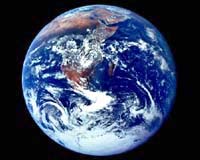
 |
Authorities confirmed 13 dead statewide but declined to put a number on how many people were still unaccounted for or to hazard an estimate of the financial losses wreaked by the storm which tore through Florida late on Friday.
"Frankly the damage assessment was still going on late into the night last night," Red Cross spokesman Pat McCrummen said in Washington.
He told of the anguish of people unable to check on their homes or get in touch with family members.
"There's debris all over the roads, people can't get back to their homes and in some cases families are not together," he said. Cell phone towers were toppled in many areas, and some 1.1 million people remained without power in 21 Florida counties.
Destroying thousands of homes and businesses as it cut across the Florida peninsula, Charley is the worst hurricane to hit the United States since Hurricane Andrew killed 40 in 1992.
Bush was to inspect the stricken zone -- roughly 322 kilometers (200 miles) long and 48 kilometers (30 miles) wide -- on Sunday.
Four of the confirmed dead were in Charlotte County, which includes this blue collar and retirement town, where ubiquitous mobile home parks were flattened to grotesque pastel carpets of twisted aluminum.
Streets were littered with the wreckage of vehicles sent tumbling like toys by the wind. Fully eighty percent of buildings and all three hospitals in the county sustained damage, the Federal Emergency Management Agency said.
Rescue workers said the death toll was sure to rise as they worked their way through debris in search of survivors and bodies in and around Punta Gorda, a sleepy community nestled on Charlotte Harbor off the Gulf of Mexico that took the brunt of the storm's vicious force.
A hospital here recorded a wind gust of 173 miles (276 kilometers) an hour before its wind meter was torn down.
Thousands of National Guard, military and police were brought in from outside the state to help the rescue operation. Curfews were in effect in some areas overnight to prevent looting.
Inhabitants of Punta Gorda were taken by surprise when the storm veered farther south than expected. Despite evacuation orders, many chose to stay in their flimsy wooden and mobile homes, which proved defenseless against the 145 mph (233 kph) winds.
"Our worst fears have come true," Florida Governor Jeb Bush, the president's brother, said Saturday after touring Punta Gorda and flying over the area by helicopter.
"Clearly, there was major devastation," he said.
"This was a beautiful, artsy village, and it's never going to be the same," said Mike Haecker, 55, surveying the tattered remains of the trailer home he and his wife evacuated before the hurricane hit.
Many hotels in the top US tourist destination of Orlando were damaged, but major theme parks including Walt Disney World were open Saturday, running on their own generators, Red Cross spokeswoman Liese Hutchison told AFP.
Hotel rooms, gas and cash were in short supply in Orlando, since power was intermittent. "If a gas station is open there are long lines to get to it," she said.
Charley cut across the Florida peninsula from west to east, from Punta Gorda through Orlando and then Daytona Beach on the Atlantic coast.
From there it veered northward, up the coast to South and North Carolina and Virginia, dropping in intensity at it went. By Sunday, downgraded to a tropical storm, Charley was dumping rain in New England.
Before hitting Florida, the hurricane battered Cuba, killing four.
Officials urged about 1.4 million people in Florida to flee ahead of the storm, but the warning was widely ignored.
Ed Rappaport at the National Hurricane Center in Florida told CNN, "Warnings were given about 41 hours in advance, and that is what we aim for. Having a major hurricane is a rare event and people are not ready for this."
bur-knt-ksb/rl
TERRA.WIRE |